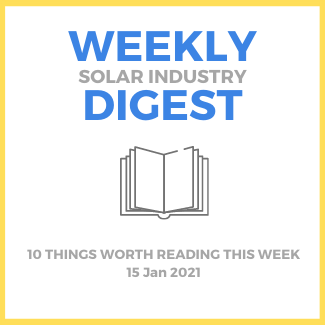Aging components will tip more and more solar owners and operators into repowering their systems. Installers can help by directing decommissioned panels to the secondary markets to become second-hand offerings. This would take a bite out of the growing problem of system waste.
Key points from NREL’s report on widespread US electrification: it drives the sustained deployment of renewables, amps up reliance of demand sectors on electricity resulting in more flexible loads, and its system cost impact depends strongly on future advancements in cost and efficiency tech.
White House Office of Domestic Climate Policy staff picks are in and progressives are happy as it heralds continued aggressive movement in clean energy. Includes Maggie Thomas as Chief of Staff, Sonia Aggarwal as a senior adviser, and David Hayes as a special assistant.
C&I now has a “long tail” that has resulted from its evolution into a very attractive asset class for investors. Key players include developers who entered the industry from related ones, institutional investors who require environmentally sound investments, and advocacy groups.
Energy Materials Corp. is now able to print transparent conductors on flexible glass – and in the world record time of 60 meters per minute. Speeding up the process of creating these films, found in PV panels, will drive down costs for these typically expensive components.
Canopies and carports need solid foundations given the vital role the material composition of the canopy plays. The Key is correct foundation placement which usually needs a Geotech surveyor. In addition to concrete piers are spread footing, helical piles, and proprietary solutions.
A new report examines monopolies in the energy and electricity sectors through corporate concentration, a small number of utilities controlling US electricity generation, transmission, and distribution. The report looks at the economic costs, history, and ways to address the problem.
Tesla has launched its own inverter. It’s standard string inverter tech and has storing level rapid shutdown and over the air updates – meaning the inverter software can be updated on the fly. By making this component themselves they hope to lower hardware costs and costs throughout their supply chain.
Installers make some mistakes in panel procurement: they don’t always weigh peak power vs. energy production, assume higher module capacity equals a more efficient system/longer-term yield, and forget that low cost from small manufacturers doesn’t always mean quality.
Q4 clean energy procurement report says corporations made the largest, most complicated transactions so far, resulting in the largest single quarter in years: 7.3+ gigawatts of contracts. Includes Amazon, Google, Starbuck, AT&T and newbies Crown and Kimberly-Clark.
